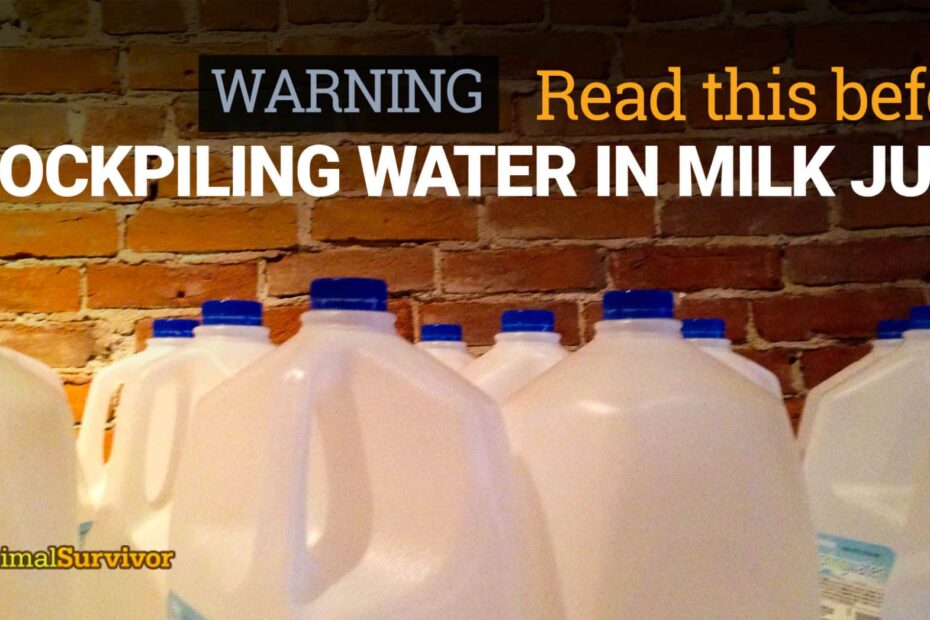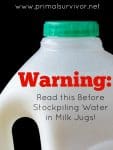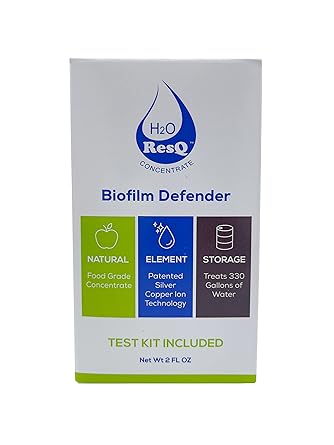[ad_1]
One of the best pieces of prepping advice I’ve heard is to stockpile emergency water in milk jugs or other plastic bottles, such as soda…
But, if you don’t dig further, it is also one of the WORST pieces of prepping advice too!
Milk Jugs Are Biodegradable!
As a newbie prepper, I stored my family’s emergency water in gallon milk jugs. The milk jugs went into the pantry and basement and were forgotten…
Until one day when I noticed water all over the floor!
The milk jugs had started LEAKING.
It turns out that those gallon milk jugs are biodegradable. It will take years before they fully degrade, but it doesn’t take long before tiny pin-sized holes develop. Water will leak out of these!
How Long Will Emergency Water Last in a Milk Jug?
In my case, the emergency water in milk jugs didn’t start leaking until about 7 or 8 months. However, I’ve heard stories from preppers whose milk jugs start leaking in as little as 3 months. For others, the milk jugs didn’t start leaking for over a year.
The life of those milk jugs will vary depending on factors like:
- Exposure to light
- Exposure to heat
- Chemicals in the water
- Type of plastic used for the milk jug
I’d say that anything over 6 months is pushing it as far as storing emergency water in milk jugs.
And the Water in Milk Jugs Might Start to Stink!
Here’s another problem about storing water in milk jugs that doesn’t always get mentioned. Since the plastic jugs are permeable, the air from outside will get into the jugs.
Usually, this isn’t such a big deal. However, if you are storing your emergency water jugs in the basement or garage (which is not recommended because of the heat), the musty air will get into your water.
Yes, your emergency water will start to taste like mothballs, dust, and cat litter!
In an actual SHTF situation, you won’t care what your water tastes like – you will just be glad to have it – but drinking crappy-tasting water is not fun and best avoided.
What’s a Better Solution to Milk Jugs for Storing Water?
You should have at least 30 gallons of emergency water stockpiled per person. However, in reality, you will probably need a LOT more than this to survive a major disaster.
Consider that the average American uses about 70-100 gallons of water per day, and you start to realize how inadequate the typical water storage recommendations are.
Read this article on how much water to have on hand.
Even if you go by the lower recommendations of how much emergency water to stockpile, you will still need a lot of containers to store it all.
Option 1: Use Milk Jugs, But Rotate Them
In my family, we don’t drink much soda, juice, or anything else that comes in a plastic bottle. So, milk jugs were the only “free” storage containers we regularly get.
Until we upgraded to water containers (see option 4), we continued using milk jugs to store our emergency water. But we just remembered to rotate through the water every 6 months.
When I say “rotate” the water, I mean you need to GET RID OF THE MILK JUG AND THE WATER INSIDE. It is NOT enough to just dump the water and put new water in the old jug!!!
This also applies if you are gradually rotating through your emergency water, i.e., refilling jugs as you use the water in them. You’ll need to toss all the jugs every 6 months.
Option 2: Buy Bottled Water (NOT recommended!)
A lot of people buy bottled water for their emergency storage. I think this is a terrible waste of money.
Most bottled water is just tap water that has been packaged in plastic bottles. It is expensive and bad for the environment. And…
You still have to rotate bottled water!
Just like how milk jugs are biodegradable, so are plastic water bottles. They will last longer than milk jugs, but eventually, the plastic will start to break down.
This is the reason that store-bought water has an expiration date. The water doesn’t go bad, but the plastic breaks down. You end up with plastic chemicals in your emergency water.
I doubt you will care about BPA in your water during a SHTF emergency – but it is better to avoid this problem.
Plastic water bottles will probably last around 5 years before they start leaking. So, if you don’t mind paying a lot of money for store-bought water and remember to rotate the water yearly, then this is an okay option for water storage.
Option 3: Repurpose Other Plastic Bottles
Milk jugs break down quickly, but other types of plastic can last much longer. Gatorade jugs, for example, are made from a much thicker plastic.
Soda bottles are also thicker and longer-lasting than milk jugs but not nearly as thick as the Gatorade bottles.
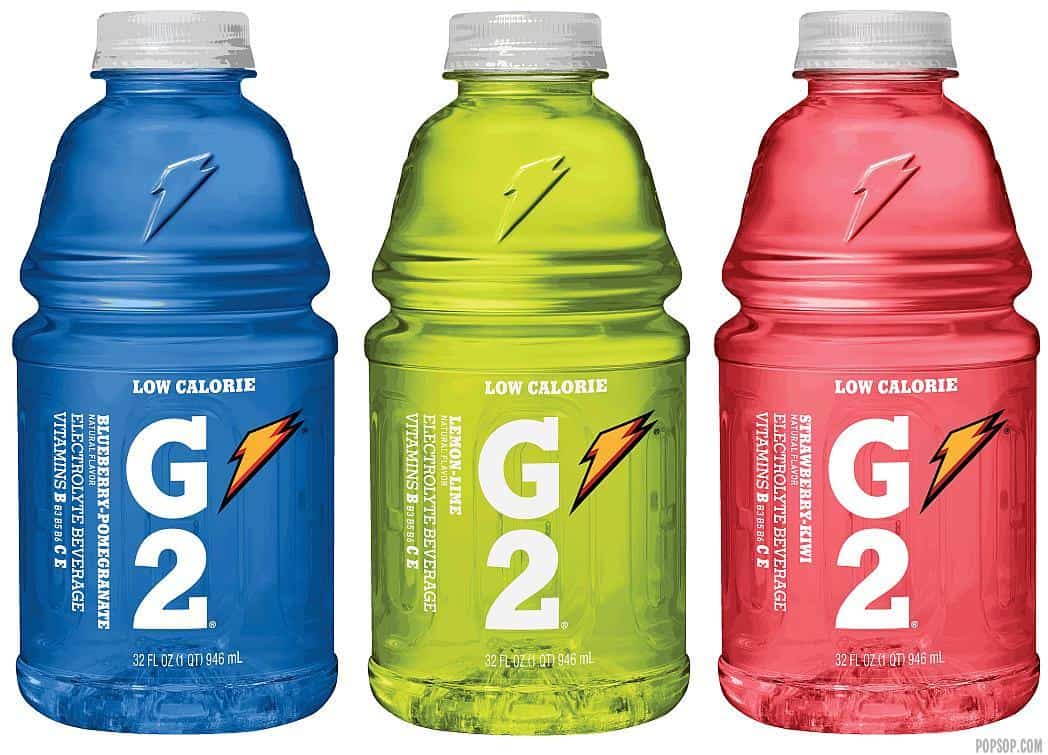
Option 4: Buy Water Containers
I think this is the best option for any serious-minded prepper. Yes, those water containers are a pricey initial investment, but they last forever, so it pays off quickly.
Many boating supply stores sell food-grade water containers. These won’t break down. The quality ones (such as the Waterbrick reviewed here.) are BPA-free and won’t leach chemicals into your emergency water.
You can also find them in camping supply stores.
You might also consider getting a large water barrel for storing more water. Just make sure you also get a pump for the water barrel too. Otherwise, getting the water out when you need it will be hard!
I use this 55-gallon emergency water barrel system.
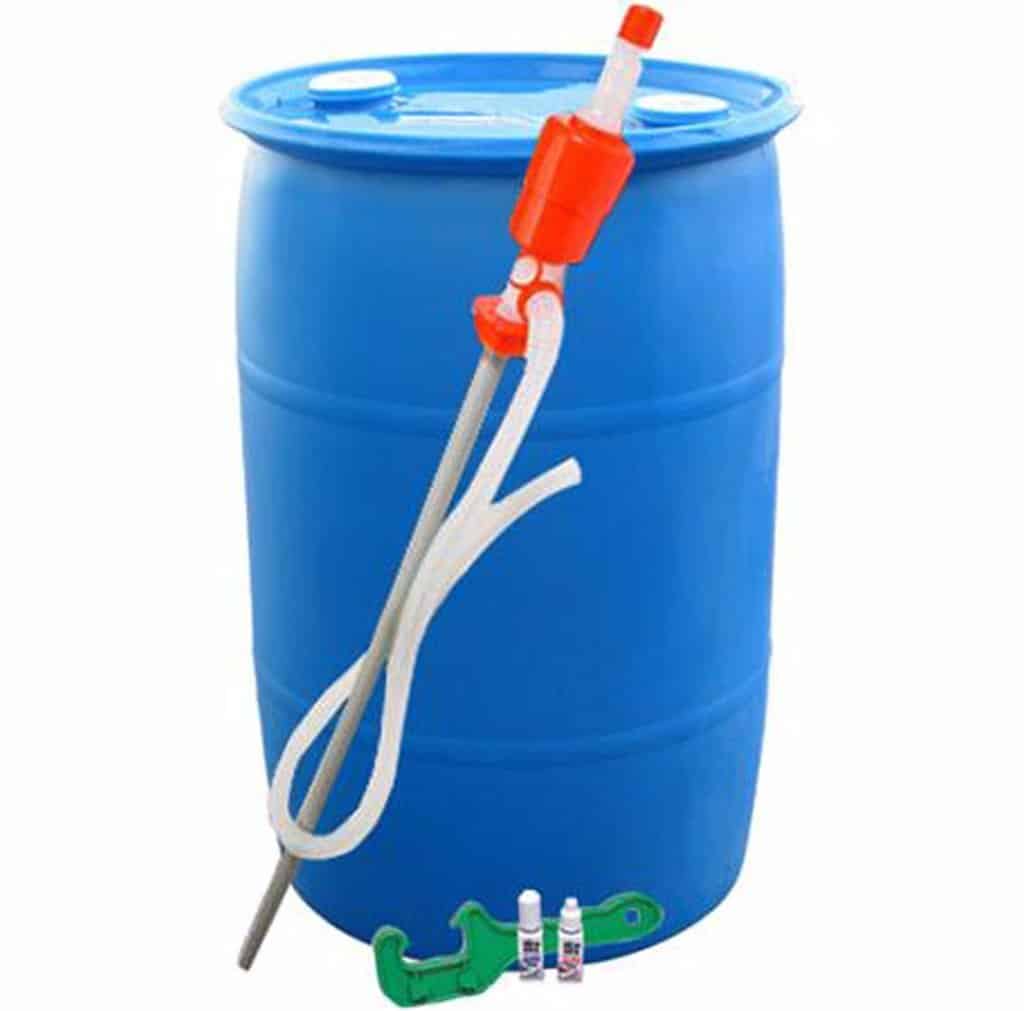
Even with professional water containers, you will still need to rotate your water supply once per year. This is because the water can get “stale.” Bacteria and mold can also grow in it, even if you think you’ve purified the container well.
To make your emergency water last longer (and spare you the hassle of rotating it), you can add a water preserver to your emergency storage.
This one (Amazon Link) will allow the water to last for 5 years without rotation.
How do you store your emergency water? Let us know in the comments.
[ad_2]
Source link
